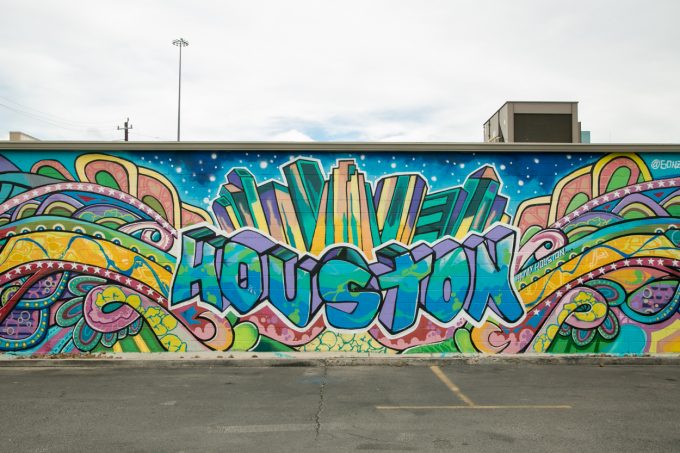Creating a Community
Bauer Research Focuses on the Intersection of Art and Community Development
Published on October 14, 2019

Art is everywhere in Houston – from the public art on the five University of Houston campuses to the mini murals on Houston’s street corners.
Dubbed “exclusively for everyone” art in community is no longer contained only in museums. The pop-up installations erected in demolition spaces in the aftermath of Hurricane Harvey and the internationally acclaimed Project Row Houses in the historic Third Ward reflect Houston’s organic creative outpouring, as sprawling and idiosyncratic as the city itself.
A new interdisciplinary study from C. T. Bauer College of Business yields important insights about the intersection of art and community-development.

Associate Dean for Research and Marketing Professor Vanessa Patrick
Associate Dean for Research and Marketing Professor Vanessa Patrick and Bauer doctoral student Ngoc (Rita) To are part of a team of researchers whose work, "Collaborative Art: A Transformational Force Within Communities," was recently published in the Journal of the Association for Consumer Research.
“Our paper is really about the potential for art to transform communities,” Patrick said. “This may be the first time the arts and business communities have worked together to establish criteria for successful projects that really do have an impact on their communities. They (the artists) have created it. We wanted to figure out how it works, how to put some metrics around it.”
Project Row Houses is one of several exceptional collaborative art projects that helped inform the research.
“While the organizations included are very different in their mission and goals, they are connected in the belief that there is tremendous power in the potential of art and aesthetics to inspire, shape, and create community,” Patrick said. “In our research article, we integrate our learning from these different organizations to outline a five-stage best-practices framework that helps foster community-based collaborative art.”
Rita To, who expects to earn her Ph.D. in May of 2020, said identifying the community need that will serve as the catalyst for the collaborative art project is a key first step.
“A community’s need for positive change might stem from the build-up of longer-term conditions of societal, political, or economic stagnation, or may be motivated by the sudden occurrence of an unfavorable event,” To said. “For example, in light of the Black Lives Matter movement, Project Row Houses brought the collective `Black Women Artists for Black Lives Matter’ to the art houses to cultivate public dialogues. The intersection between art and activism at this showcase offered the community a conduit to host conversations about race.”
To’s research has focused mostly on the impact of brand design and aesthetics. She said the collaborative art project raised her awareness of the transformative effect art can have on communities.
“The collaborative art itself serves as physical proof of the community’s ability to work together and a reminder of its collective values,” she said. “In the same way that material possessions are reflections of one’s self-identity that can preserve and protect memories, collaborative art can serve as an anchor for a community’s shared history and common goals.”
Coauthors on the study are Melissa G. Bublitz of the University of Wisconsin and the Sustainability Institute for Transformation; Tracy Rank-Christman of the University of Wisconsin-Milwaukee; Luca Cian of the University of Virginia; Xavier Cortada of the University of Miami; Adriana Madzharov of the Stevens Institute of Technology; Laura A. Peracchio of the University of Wisconsin-Milwaukee; Maura L. Scott of Florida State University; Aparna Sundar of the University of Oregon and Claudia Townsend of Miami Business School.